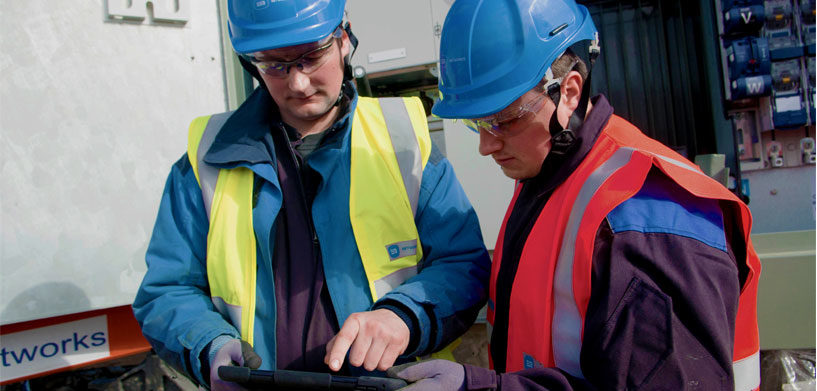Recently, our utilities and communications experts held a roundtable discussion regarding ERP integration. This wide-ranging conversation touched on everything from the reasons utilities ought to integrate their GIS and ERP systems to how they’re currently managing their assets. Present at this discussion were David Kenney, vice president of implementation services; Don Lorente, services technical manager; Peter Krochenski, managing consultant; and Volker Elste, executive sales consultant. Below is an excerpt of the discussion on what ERP integration is and how it can benefit Hexagon’s G/Technology customers.
Let’s start today’s discussion with the basics. First, what exactly is ERP?
Volker Elste: ERP stands for enterprise resource planning. It’s all the back-office asset, inventory, and maintenance management that makes a utility run. It’s typically driven by a location hierarchy. Every feature or task relates to a functional location in the ERP model. At any location, utilities can have equipment assemblies installed, and those assets will have a function, maintenance history, etc. The locations represent (and map to) some of the assets we model and manage in G/Technology, but with less geographic detail and without the logic of how assets connect to one another functionally as we do in our operational network models.
Peter Krochenski: Historically, most of our customers’ asset networks were designed and managed in G/Technology, our advanced utility GIS, often independent of ERP. There are historic integration points between GIS and ERP, but these implementations have been used mostly in Europe. Now, we’re seeing growing interest in North America from customers wanting to have their assets in an ERP system align with their G/Technology system.
Why should customers integrate their GIS & ERP systems?
Don Lorente: Because managing them separately duplicates data and, even worse, creates conflicting information. It also prevents utilities from automating common workflows that touch both systems. Ideally, you want both to align so you can harness the best aspects of both platforms, whether that’s different aspects of data or particular functional capabilities.
ERP systems are where customers maintain their high-value assets. For example, if you have a compressor with a US$2 million jet engine powering it, you could lose your warranty if your maintenance isn’t performed on time. And some large items may have lead times of months, so utilities need to be aware of that and factor it into their inventory and renewals. That’s what an ERP system like SAP manages; it ensures scheduling is done correctly.
However, utility companies don’t want to manage their assets in two spots. The assets in G/Technology support planning, engineering and operations, but they are also needed in the ERP to support activities like asset management, financial reporting, and scheduled maintenance. ERP integration avoids managing these assets as two discrete objects in two different systems. Instead, we link them so when things get planned in G/Technology, they get automatically pushed over to the ERP. It creates a bi-directional interface, so customers don’t have to enter all this information twice. Plus, they possess an accurate view of their network.
How are utility companies managing their assets now?
Peter Krochenski: Many are managing their assets only in their G/Technology system. However, this is a missed opportunity to take advantage of the different aspects of managing assets that an ERP system provides. One example is in materials management tracking. Where does a piece of equipment like a transformer go when it moves locations, say, into a yard and then back up to the field? And, can its maintenance and asset history remain linked to it? G/Technology does a great job of generating bills of materials for jobs or design estimations. Linking those items to live supply chain information in ERP can give better insights for costing and job planning. That’s where having ERP system integration is beneficial.
Volker Elste: Right, and because G/Technology is completely open access, it allows utilities to do a better job of integration than any other product out there.
Have many utility companies already started ERP integration?
Don Lorente: Right now, utilities are operating with various levels of sophistication with ERP. But as the industry matures and customers adopt more and more modules, the benefit of integration is becoming clearer, and they’ll start to ramp up investment in this area.
David Kenney: The maturity of the ERP implementation begins with the customer. As it matures and the overlap of assets becomes more evident, customers recognize there’s value on both sides and they need to figure out how to maximize additive benefits while minimizing overlap. I really think it ties to the maturity of these solutions and taking further advantage of a full-fledged ERP once they commit to it.
To find out more about our G/Technology products, visit our website.















